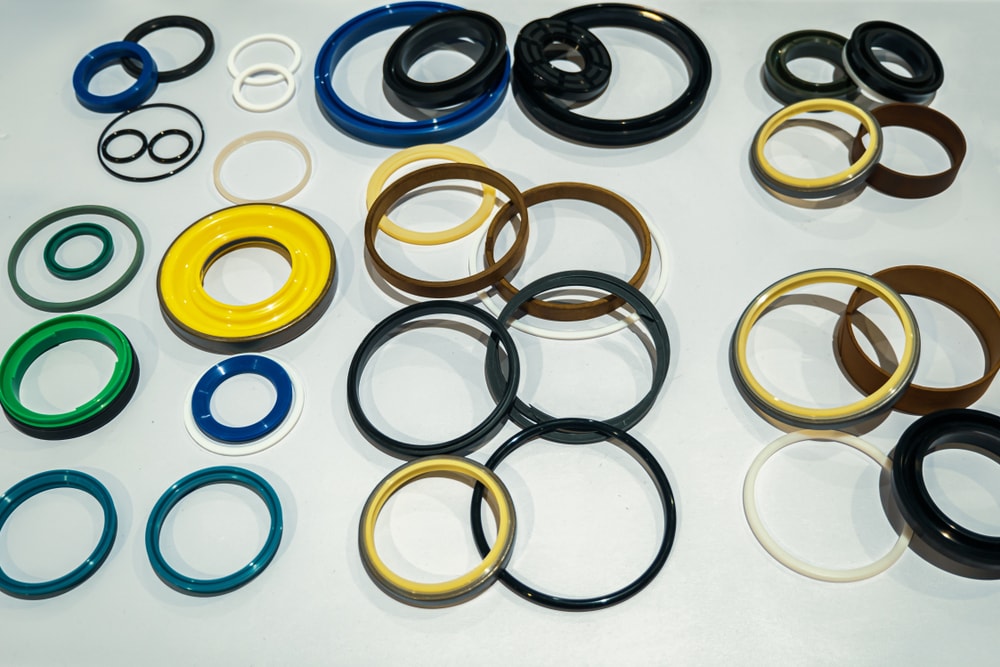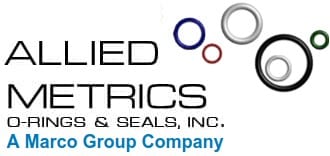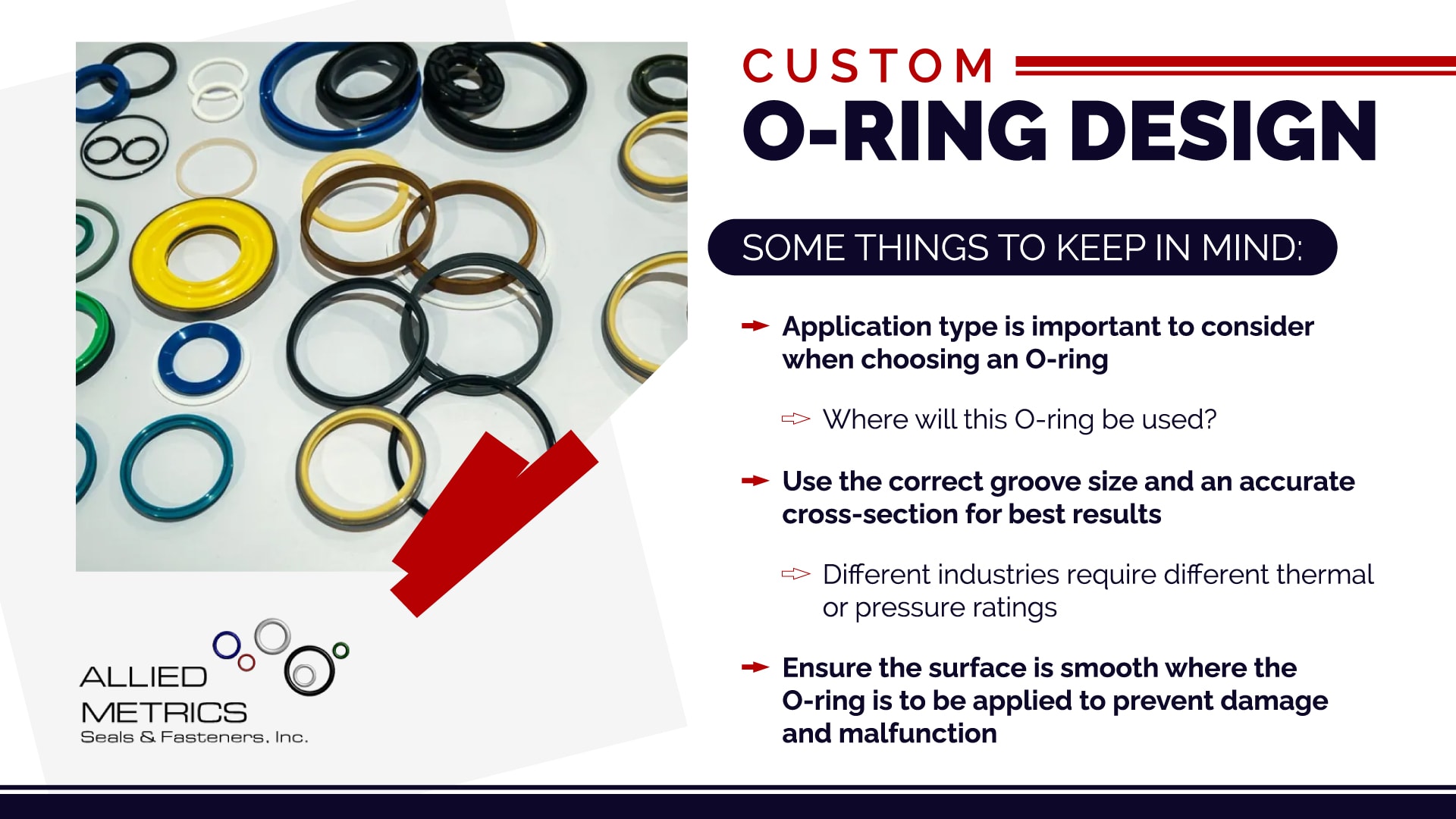An O-ring groove is a circular cross-sectioned recess in a housing or mechanical device designed to hold an O-ring seal. The O-ring sits in the groove and is compressed during assembly, creating a seal between two surfaces. O-ring groove design is critical to the performance of the O-ring seal.
When designing an O-ring groove, it is essential to consider all these factors to ensure an effective seal. O-rings are available in various materials, sizes, and cross sections to meet the needs of most applications. O-ring compression ratios can vary depending on the application.
At Allied Metrics, we can assist with O-ring groove design and O-ring selection to ensure a successful application.

Factors To Consider In Designing An O-ring Groove
There are several factors to consider in an O-ring groove design, including:
- The O-ring material must be compatible with the housing material and the environment where the seal is needed.
- It must have the correct groove size and an accurate cross-section.
- It must also be compressed to the proper ratio to create an effective seal.
- The proper o-ring groove calculation.
- The surface finish of the groove must be smooth to prevent O-ring damage and allow for proper O-ring compression.
Types of O-ring Grove Design
Standard O-ring groove
The Standard O-ring groove is typically used in applications where there is a need for a static seal, such as in hydraulic systems. Dynamic sealing applications use this groove, such as in pneumatic systems.
Dovetail O-ring groove
A dovetail O-ring groove is a type of O-ring groove design that incorporates a dovetail-shaped cross-section. It is a type of groove designed to provide superior sealing performance in applications with significant thermal or pressure cycling.
Metric O-ring groove
Metric O-rings are designed for various applications, including high-pressure hydraulic systems, to seal fluids and prevent leaks by filling the space between two mating surfaces. Metric O-rings have a round cross-section and are available in different sizes.
If you want to know more about o-ring groove dimensions and its functions, visit Allied Metrics’ website to learn more!
Advantages of O-ring Groove Design
Here are some benefits of using an O-ring groove design
- It provides a reliable seal for a wide variety of applications.
- Available in various materials to resist degradation from chemicals, heat, and other environmental factors.
- It can be compressed to the proper ratio to create an effective seal.
- Also available in various o-ring groove sizes and cross sections to meet the needs of most applications.
Allied Metrics: Why Should You Choose Us?
Our X-rings serve a variety of sealing applications well. QUAD-Rings, also known as X-rings, provide additional sealing benefits over other sealing solutions. An O-ring sits in a groove and compresses when assembled in dynamic and static applications, while a silicone ring fits between two parts to fill the gap between them.
The most notable advantages of QUAD-rings/X-rings over O-rings include:
- Increased lubrication retention with deeper grooves
- Sealing capacity is increased by four lips
- A high level of stability for dynamic applications
- Provides more excellent resistance to spiral failure than O-rings
- High lubrication retention prolongs seal life
- Multiple seal points require less compression force to create an effective seal
O-ring Grooved Design: Critical To O-ring Seal’s Performance
Always remember that the o-ring seal design greatly affects the o-ring groove design. Ready to start designing your own o-ring grooves? It’s not as hard as you might think. In fact, with our help, it can be downright easy.
When designing an O-ring groove, it is essential to consider all factors affecting the seal. O-rings are a versatile and reliable option for many applications. Contact us today and let us show you how simple and cost-effective custom tooling can be. With Allied Metrics’ team of experts by your side, there’s no limit to what you can create. Let’s get started!

